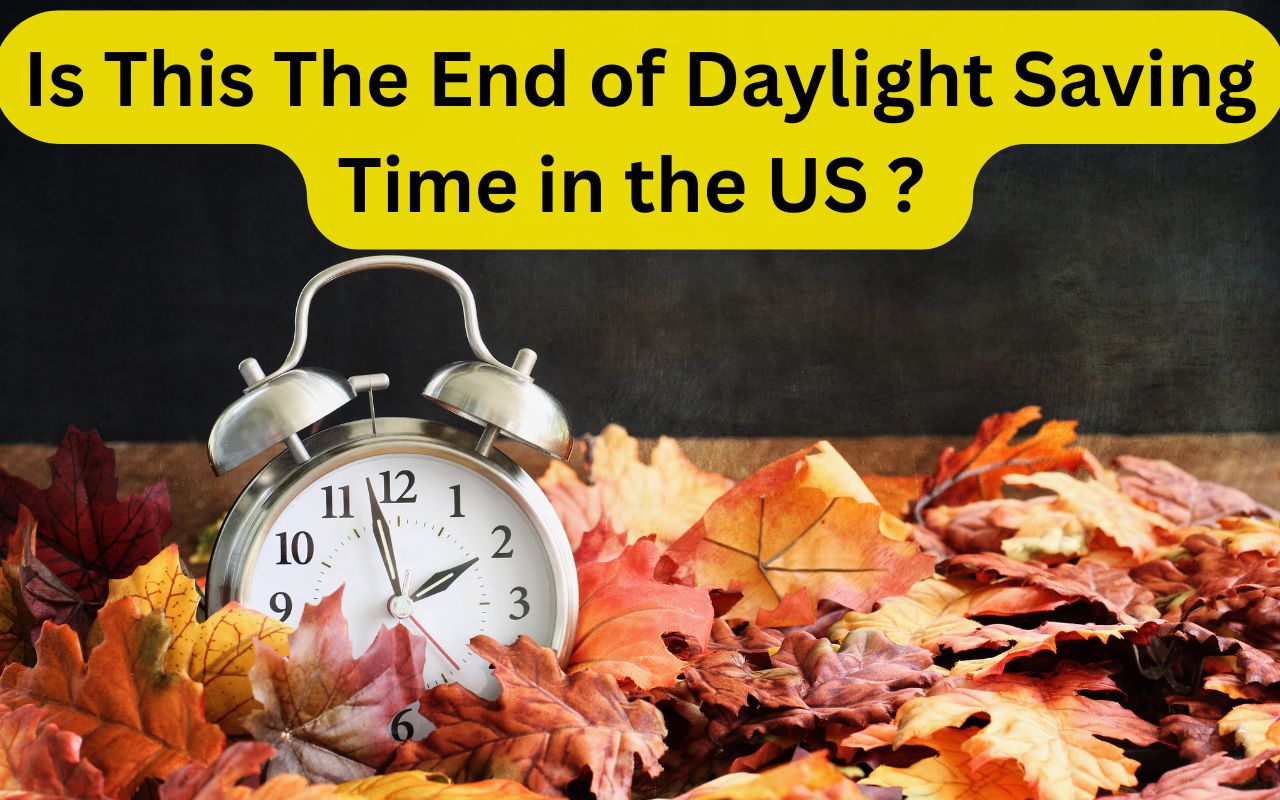Daylight Saving Time (DST) has been one of the most high-profile affairs in America for more than a century. It was first done during World War I for energy-saving reasons, and again during World War II as the evening hours fell with less need for artificial lighting. Under this practice, clocks are advanced one hour in the spring and set back in the fall. This shift aims for the maximum take-up of daylight over the summer months and, therefore, longer evenings and ideally less use of electricity.
However, even with the long history that it has been employed in the practice, growing debates have emerged regarding the necessity of DST. Health, productivity, and safety considerations have given rise to reform calls in recent years. Contrary to various studies that indicate time change alters people’s circadian rhythms, leading to poor sleep quality and heightened stress.
These assumptions make more people prone to heart attacks and accidents during this time. The touted benefits aside from energy saving have also significantly lost their footing with innovations like low-energy lighting and heating systems. Many Americans are beginning to wonder if the biannual time changes are worth the disruption.
Is This The End of Daylight Saving Time in the US ?
Daylight Saving Time traces its roots back to World War I. Easy goal: save energy. Spring-forward movement of clocks advanced nights, making the evenings longer with less use of artificial light. World War II reinstated it for the sake of energy conservation.
| Article Title | Is This The End of Daylight Saving Time in the US ? – What The 2025 Decision Could Mean? |
| Organization | DST |
| Country | USA |
| Article Type | News |
In 1966, Congress passed the Uniform Time Act that standardized DST, which most of the country has implemented since its approval; however, Hawaii and most of the areas in Arizona do not adhere to DST. Many have debated over the years whether it is worthwhile anymore.

Others claim that the energy-saving advantage no longer holds water. Critics say that its negative impact of interfering with sleeping and causing illnesses outweighs every supposed positive effect.
Why There’s a Huk Push to Ditch Daylight Saving Time; Let’s Know It In Detail
The debate over Daylight Saving Time has been on for some time now. Many states have urged for year-round Standard Time or permanent Daylight-Saving Time. Sleep scientists caution about its impact on biological rhythms. There is evidence showing how altering the clocks impacts sleep, increases the chances of heart attacks, and leads to accidents.
In 2022, the U.S. Senate, at last, passed the Sunshine Protection Act, urging to make DST permanent. But the bill did not clear the House. According to advocates, health and well-being could take over the role of empty tradition. This change in 2025 could mark the end of an era.
Why Ending Daylight Saving Time (DST) Will Improve Health and Safety
There is a chance that the abolition of Daylight-Saving Time will provide us with numerous health benefits. There is near interference with sleep each time the clocks are advanced bi-annually, resulting in increased stress.
Sleep deprivation often causes more severe diseases such as heart conditions and high blood pressure. The body may then revert to natural rhythm, healthier sleeping patterns, and improved moods when we abolish DST. Accidents are another concern with DST. Studies indicate that car accidents increase after the clock is changed.
Workplace injuries also increase among groggy, sleep-deprived workers. Permanent Standard Time or DST could minimize these risks. Overall, a more consistent schedule might lead to healthier and safer communities.
- Kamala Harris’s Social Security Vision
- Kamala Harris and Food Stamps
- Trump and Food Stamps
- Donald Trump Views on Social Security
Economic Impact of Permanent Standard Time
Implementation of a permanent time system may have economic advantages. Farmers and other farming enterprises have always opposed Daylight Saving Time. The farmers would want to operate at more stable daylight hours. The retailers and tourist industries are usually pro-DST, which they say leads to more evening activities. Business organizations would be affected differently depending on their kinds of businesses.
For some people, however, a permanent regime of time would better simplify the schedule. It would also help mitigate the loss of productivity through sleep disturbances. Sleep-deprived workers will cost millions of dollars for companies in health and lose time at work. This is quite complex, but more stability could bode positively for many industries.
Effects on Life and Routine
How would your life change if Standard Time were permanent? If Daylight Saving Time were to be done away with, school times would likely not be adjusted. Parents and kids would adjust much better to daylight schedules.
For example, morning routines may become less hard while also fewer groggy starts. Outdoor evening activities will be affected especially during winter seasons. Some people will miss having longer evenings of daylight.
Early risers though will be enjoying greater morning light. Work schedules could also stabilize and help improve work-life balance. Generally, it would likely make life more predictable for families, businesses, and communities throughout the country.
Problems with the Change
Ending Daylight Saving Time will present its challenges and problems. Man has grown accustomed to the twice-a-year time change. The change will need some adjustment and time. Certain sectors like retail and tourism would be financially affected.
Companies conducting business in the evening hours might fear the loss of daylight hours. Those firms that deploy software programs that manage scheduling and transportation systems will need to alter them. There is also the matter of national cohesion.
Some states are interested in maintaining their earlier practices. If this matter is not handled carefully, it might create some confusion. Sweeping out all these issues will be the answer when considering an embarrassment-free switch.
States Seeking the Abolition of DST
Many good states have advocated the abolition of Daylight-Saving Time. Florida, Washington, and California passed laws advocating permanent DST. However, they need Congress to pass the change. Meanwhile, places such as Arizona and Hawaii have always opposed DST.
They remain on permanent Standard Time, and, despite this, a few problems have arisen. New legislation in Congress means other states may be compelled to comply. This brings consistency nationwide-a boon for travelers and businesses alike. This movement is gathering strength. Many believe that anything other than an integrated approach cannot make much of a difference.
The Future of Timekeeping in the US
What does the future hold for Daylight Saving Time? If changes go into effect in 2025, there may be new life for Americans. But it can take some adjustment, and so far, the benefits run pretty deep to ensure sleeping, health, and safety in better places.
Debates about Daylight Saving Time are still far from over. But with increased support among experts, lawmakers, and the people, change seems inevitable. The ball is in the coming years. Will the United States finally say goodbye to Daylight Saving Time for good? Only time will tell, but one thing’s for sure: changes are ahead.
Conclusion: A New Era for US Timekeeping
This is a big turn because the end of Daylight-Saving Time in the United States by 2025 means that it might soon be over for the United States to manage time as is. For more than a century, DST has been an ingrained part of American life and affects everything ranging from the work schedule to the sleep patterns. However, the disadvantages of changing the clocks twice a year raise questions about the importance of DST in the present time. And thus, with a full-fledged debate, it seems pretty obvious that a change could happen at any minute.
| Homepage | uhmychart.org |
Elimination of DST would bring lots of benefits. From a health standpoint, permanent Standard Time or Daylight-Saving Time would better synchronize sleep patterns, reduce stress, and decrease accidents resulting from the disruptions that clock changes cause. Positive effects on public health and safety alone provide an excellent justification for considering a permanent time system. Another benefit of eliminating DST is that this would result in economic benefits because of the reduced losses of productivity and easy scheduling when planning business activities, especially for activities requiring consistency and predictability.
PV Martinez holds an MBA in Finance from the University of Michigan. When not analyzing numbers, PV enjoys playing football and spending time singing his favorite tunes.

